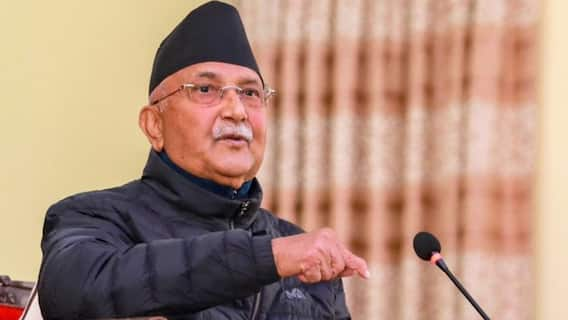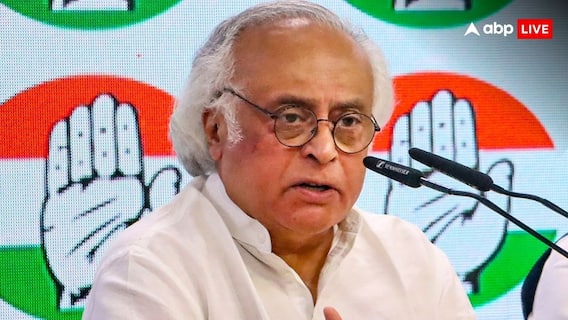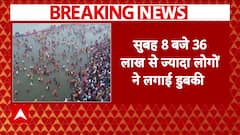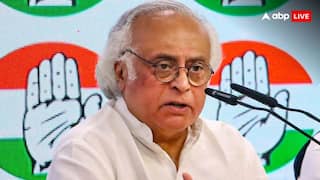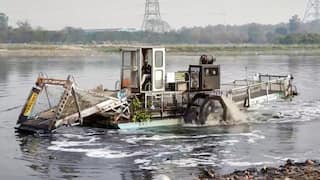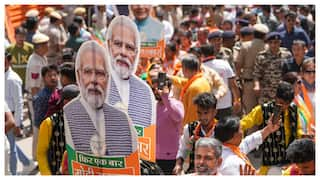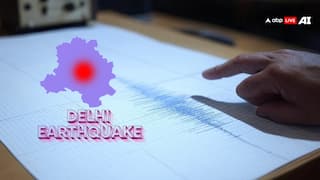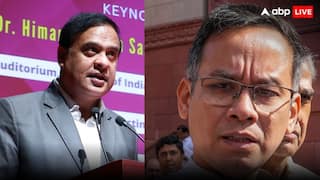2.8 Magnitude Earthquake Hits Himachal Pradesh After Strong Tremors Jolt North India
A mild earthquake of magnitude 2.8 has hit Himachal Pradesh after strong termors shook North India on Tuesday night.

A mild intensity earthquake of magnitude 2.8, with its epicentre in Himachal Pradesh's Kinnaur, hit the state at 12:51 am on Wednesday soon after strong tremors shook north India on Tuesday night. However, no damage was reported, officials said.
Earlier, tremors were felt in almost all parts of the state around 10:17 on Tuesday night following a 6.6 magnitude earthquake whose epicentre was in Afghanistan's Hindu Kush area at a depth of 156 km. People in Shimla, Mandi and several other places ran out of their houses in panic but no loss of life or property has been reported so far, the officials said.
Tremors were felt in all the 12 districts of the state but no loss of life or damage to property has been reported, Special Secretary Disaster Management Sudesh Mokta had told The PTI. In the past 24 hours, more than 10 earthquakes were witnessed in India and the nearby region. Their magnitude was between three and four, he added.
At least 11 people were killed, while more than 100 people were injured after a magnitude 6.6 earthquake jolted Pakistan and Afghanistan on Tuesday, the news agency Associated Press reported. The epicentre was in Afghanistan and the affected countries included Pakistan, Turkmenistan, Kazakhstan, Tajikistan, Uzbekistan, China, and Kyrgyzstan, reports said.
Strong tremors from the earthquake were also felt in Delhi-NCR and across much of northern India last night.
"An earthquake with a magnitude of 6.6 on the Richter Scale hit 133km SSE of Fayzabad, Afghanistan today at 10:17 pm IST," said National Centre for Seismology. The US Geological Survey said the centre of the magnitude 6.5 quake was 40km (25 miles) south-south-east of Jurm in Afghanistan’s mountainous Hindukush region, bordering Pakistan and Tajikistan.
Afghanistan’s disaster mitigation ministry told Reuters that at least two people were killed in Laghman province. In neighboring Pakistan, at least nine people died, including a 13-year-old girl who died when a wall collapsed at her home, and at least 100 others were injured.
Afghanistan is habitually hit by tremors, particularly in the Hindu Kush mountain range, which lies close to the intersection of the Eurasian and Indian structural plates.
A Noida resident said he first noticed the dining table shaking. "Soon after we saw that the fans were also shaking. The earthquake was strong in terms of intensity and stayed for a longer period," the resident of Hyde Park society in Noida was quoted saying by the agency.
Meanwhile, Fire Director Atul Garg said, "No building in Shakarpur area was found tilted. An initial call was given by some of the neighbours. The occupants of the building were not aware of the call."
Mahesh Palawat, Vice president Meteorology And climate tweeted, “It was a strong #earthquake. Worse is over now. Aftershocks are usually milder. Of moderate intensity. Can damage old buildings in the vicinity which are damaged by main event. May not be felt in #India. no worries. #AfghanistanEarthquake #earthquake"
Earthquake zones of India
India is divided into four seismic zones based on the intensity of earthquakes that are likely to occur in these areas.
Zone V is the most severe intensity zone, which includes parts of Jammu and Kashmir (Kashmir valley), the western part of Himachal Pradesh, the eastern part of Uttarakhand, Kutch in Gujarat, part of northern Bihar, all northeastern states of India, and the Andaman & Nicobar Islands.
Zone IV is the severe intensity zone and includes Ladakh, remaining parts of Jammu & Kashmir, Himachal Pradesh and Uttarakhand, some parts of Haryana, parts of Punjab, Delhi, Sikkim, the northern part of Uttar Pradesh, small portions of Bihar and West Bengal, parts of Gujarat and small portions of Maharashtra near the west coast, and a small part of western Rajasthan.
Zone III is the moderate intensity zone, which includes Kerala, Goa, Lakshadweep islands, parts of Uttar Pradesh and Haryana, remaining parts of Gujarat and Punjab, parts of West Bengal, western Rajasthan, Madhya Pradesh, remaining part of Bihar, northern parts of Jharkhand and Chhattisgarh, and parts of Maharashtra, Odisha, Andhra Pradesh, Telangana, Tamil Nadu and Karnataka.
Zone II is the low intensity zone, which includes remaining parts of Rajasthan, Uttar Pradesh, Gujarat, Haryana, Madhya Pradesh, Maharashtra, Odisha, Andhra Pradesh, Telangana, Karnataka, and Tamil Nadu.

Trending News
Top Headlines










